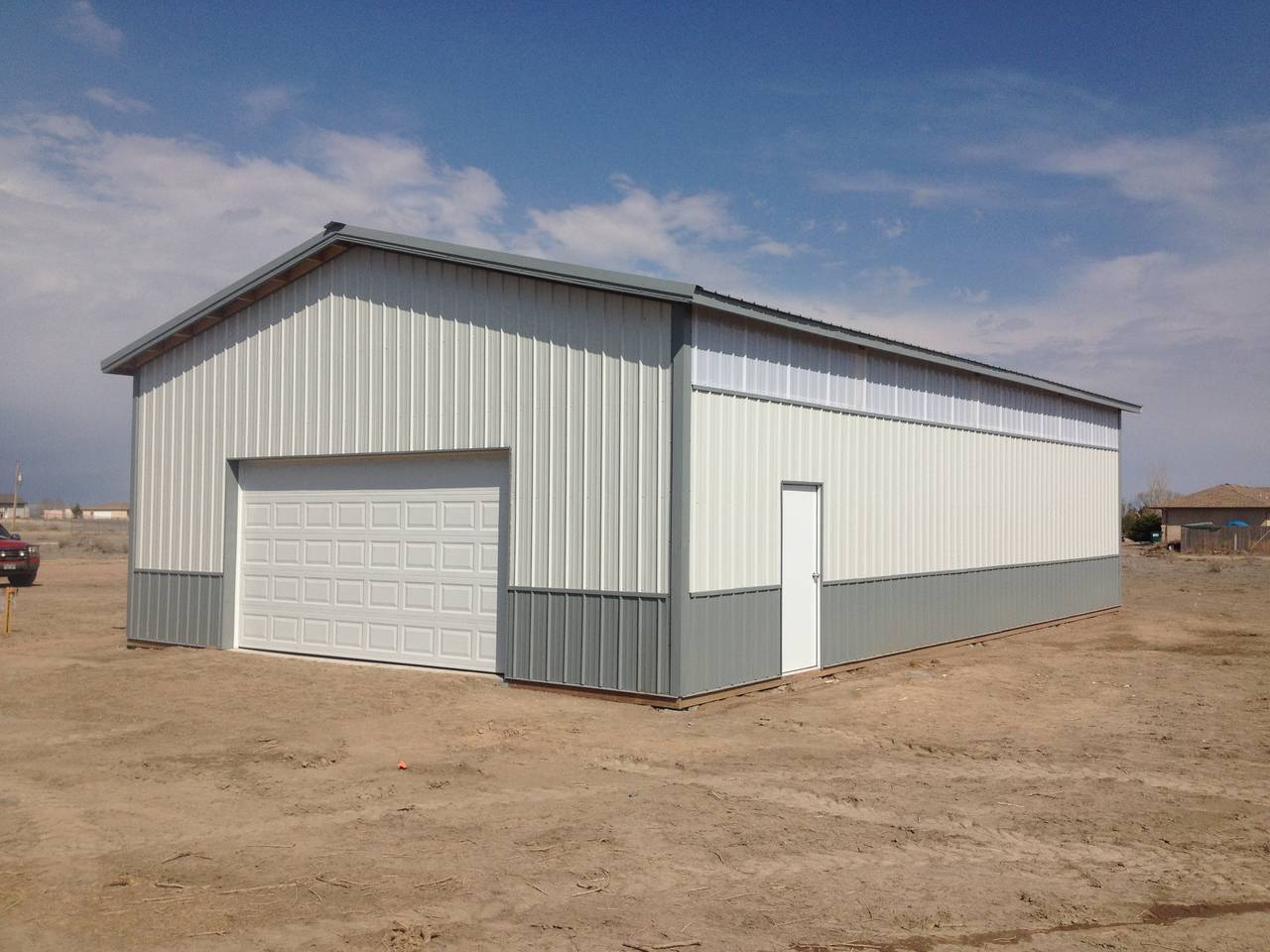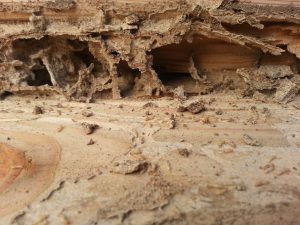Full Frost Wall Foundation?
Reader AARON in ROSEVILLE writes:“Assuming (not yet verified) that I don’t need a full frost wall foundation for my barndo, wondering about the pros/cons for full frost wall vs pier footings in southern MN. Obviously there is the cost difference, but when it comes to building performance(in the winter), would you recommend frost wall over pier footings? And are there any work arounds to improve the cold weather performance of a pier footing?”
Mike the Pole Barn Guru responds:
When we built our post frame barndominium in NE South Dakota 16 years ago, we could have utilized any foundation type we wanted. We opted for embedded columns and have had absolutely no regrets about our choice.
From a standpoint of both Code requirements, as well as performance over time, there is not a structural reason to use a full frost wall for a post frame barndominium.
Any heated structure should be meeting the most recent edition of ICC’s (International Code Council) 2021 IECC (International Energy Conservation Code), even if not required in your jurisdiction (usually due to either no structural permit requirements or not yet adopted). You can look up your county’s Climate Zone at: www.codes.iccsafe.org/content/IECC2021P2/chapter-3-re-general-requirements. Once you know your Climate Zone, Chapter 4 will guide you through insulation requirements for roofs/attics, walls and floors.
In Minnesota, Code requires slab edges to be insulated down four feet with R-10 insulation. With post frame construction, you can rip 4′ x 8′ sheets of R-10 EPS in half lengthwise. Attach lengthwise to the inside of pressure preservative treated splash plank (aka skirt board or bottom girt) with top of insulation even with eventual top of concrete slab. Balance of requirement is solved by using another two foot piece horizontally at the bottom of vertical insulation (basically forming an insulation “L”). This does require digging a trench, however one would need to be dug (and far deeper) for a concrete foundation wall.
Now your challenge….how to insulate piers. Whether using embedded columns with a concrete footing/bottom collar, or full concrete piers with wet set brackets, you can build square forms out of EPS. It does mean you will have excess insulation on the under slab side of the pier, but it is a viable and cost effective solution.
Best way to ensure a successful outcome is with really great site preparation. If you would kindly visit our website www.HansenPoleBuildings.com and navigate to SEARCH in the upper right corner. Type in SITE PREP and hit ENTER. Up will come a plethora of relevant articles for your reading pleasure.
Tag Archives: pressure preservative splash plank
Oh What to do About Bare Splash Planks
 Most people rarely notice or pay attention to splash planks (skirt boards) below their post frame (pole building) siding. They are so far below eye level frankly most people just do not notice them!
Most people rarely notice or pay attention to splash planks (skirt boards) below their post frame (pole building) siding. They are so far below eye level frankly most people just do not notice them!
Reader TOOD in SPRINGFIELD worries about them. He writes:
“Hi there,
I called the Hansen number and the lady told me I could ask a question in here for a quick response. I wanted to ask, on the finished Hansen buildings, the bottom of the building is exposed—there’s just the wood trim there. You would think there would be some metal trim over top… not just for appearance reasons but to protect the wood. I believe the wood is pressure treated, which I know lasts awhile but it would start to warp/crack over time. I don’t think Hansen would put trim over it, but do you think it would help if I added metal trim over it at a later date? I know the metal would have moist soil up against it a little at the base, so I don’t know if that’s ok. I’m just trying to protect it long term (30+ years). Would it be better to push dirt or gravel against it to cover it up or would it not matter either way? The downside to gravel is I’d have to buy it but also weeds would grow up through it, so it would be more maintenance over time to get rid of the weeds. Anyway, I’d really appreciate your input on all of this and I really appreciate your time. Thanks! Todd”
Mike the Pole Barn Guru answers:
Around the bottom of any properly designed post frame (pole building) there should be exposed four to six inches of pressure preservative treated splash plank. In our case, splash planks are treated to a minimum UC-4A standard, making them acceptable and appropriate for a lifetime of use in contact with ground. This exposed treated wood is ideal for pouring aprons, landings, sidewalks and driveways against and it keeps concrete from being in contact with your building’s steel siding and trims, as either of them will decay with direct contact to chemicals in concrete. You want to avoid having soil or gravel against steel as it will rust. If you feel it imperative to cover your splash planks, we can provide vinyl plasti-skirts to cover them (https://www.hansenpolebuildings.com/2017/08/plasti-skirt/).
When it comes to post frame building construction, I know a little bit about a lot of things. I get asked a lot of questions about how to solve post frame building challenges and do a pretty fair job of answering them. When I do not know an answer I feel confident in, I have no problems with doing the research or reaching out to an expert. Such was the “Case of The Termite Shields” (sound almost like a Sherlock Holmes story).
In this case, I went to “The Bug Doctor” Jerry Schappert of www.pestcemetery.com
Here was my question:
 “We have a Building Official asking for a termite shield for a post frame (pole) building. The building utilizes pressure preservative treated columns embedded in the ground with a treated splash plank around the base of the walls. At the bottom of the steel wall siding is what is known as base trim, it is steel and extends outward from the splash plank 1-1/2″ with the outer edge being a downward bent lip. This should serve to function just like the steel termite shields we have viewed online. 4-5/8″ of the pressure preservative treated splash plank is visible below the base trim. There is a product called a plastiskirt which is vinyl and designed to wrap the splash plank. In your opinion, what would be the best design solution to protect the building from termites as well as to meet the requirements of the Building Code?”
“We have a Building Official asking for a termite shield for a post frame (pole) building. The building utilizes pressure preservative treated columns embedded in the ground with a treated splash plank around the base of the walls. At the bottom of the steel wall siding is what is known as base trim, it is steel and extends outward from the splash plank 1-1/2″ with the outer edge being a downward bent lip. This should serve to function just like the steel termite shields we have viewed online. 4-5/8″ of the pressure preservative treated splash plank is visible below the base trim. There is a product called a plastiskirt which is vinyl and designed to wrap the splash plank. In your opinion, what would be the best design solution to protect the building from termites as well as to meet the requirements of the Building Code?”
The good doctor replied (in very short order I might note):
It sounds to me you’ve met the code already? What more does he or she want? There are ‘pipe shields’ on the market but they are just basically what you describe. Pole barns here in Florida basically have very little code requirements and we are the termite capital of the world. So without knowing what more the inspector is looking for I wouldn’t know how to answer.
Need a bug expert, try Jerry. Need a post frame building expert? I will give my best impression.






